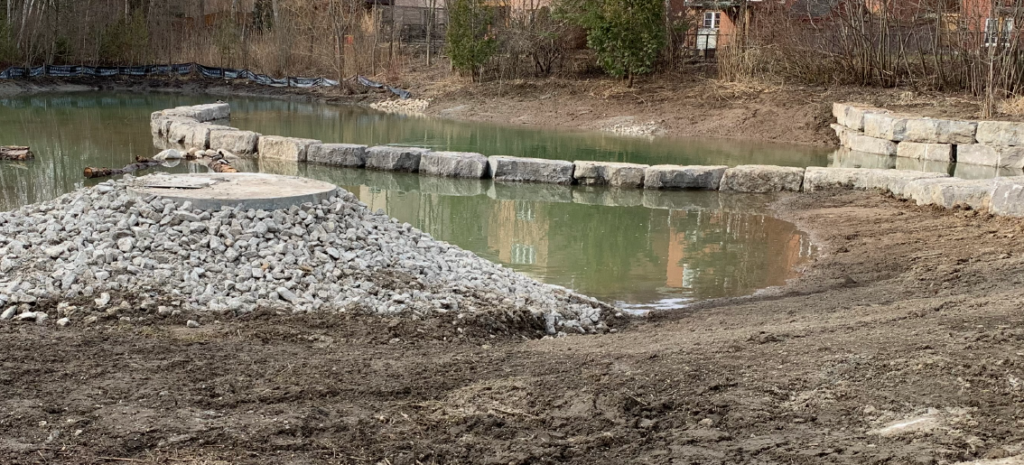Wow, what a year it’s been! In 2022, our restoration team completed over 90 projects across the Lake Simcoe watershed. From stormwater retrofits, low impact development features, to community action projects, creating wetland habitat and agricultural projects, we continue to make critical on the ground improvements to our watershed.
Here are some of our favourite projects from 2022 or if you’re interested you can check out our Year in Review Video.
1. Stormwater Management Pond Redesign in Aurora
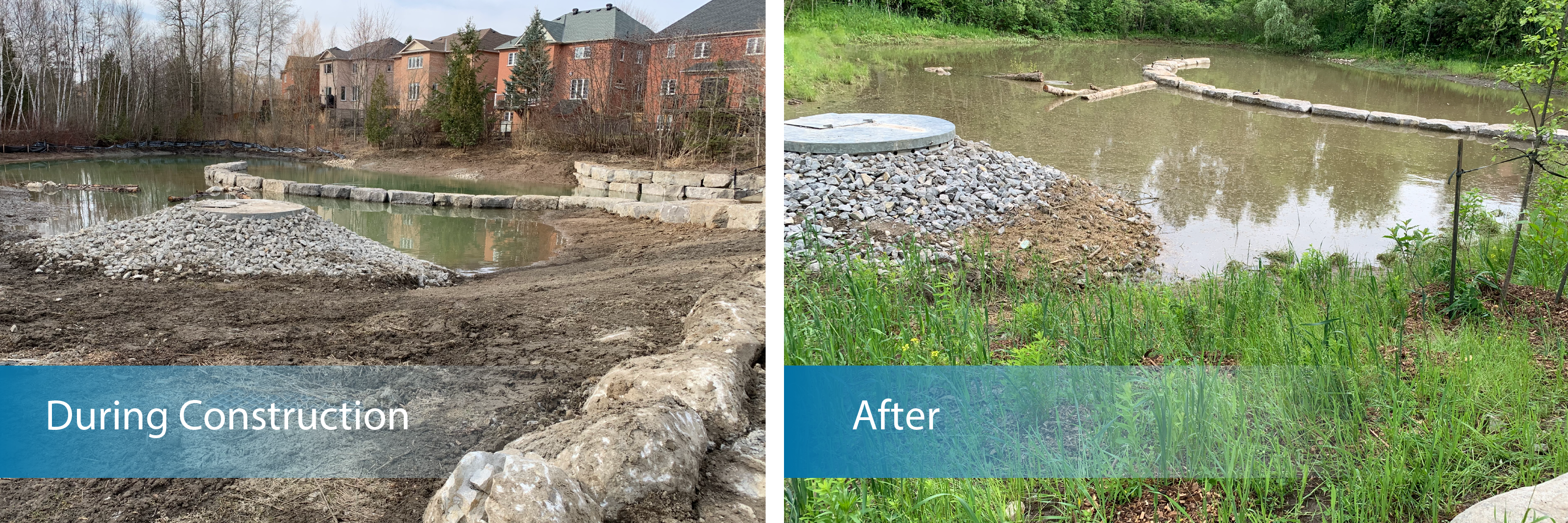
A stormwater management pond in the Town of Auora was identified through our inspection and maintenance program as needing a retrofit. During the summer of 2020 the Town worked with us to further investigate the Stormwater management pond to determine why it was not functioning properly. A site investigation determined that the pond was filled with sediment, and the pond bottom was not excavated as per the design.
We worked closely with the town and our consultant to provide updated drawings for the pond bottom, forebay and main cell to increase sediment storage capacity while not expanding the pond’s existing footprint.
This project was a great partnership between the Conservation Authority and the Town of Aurora. The redesign has increased the ponds capacity, allows for additional sediment storage, and directs the maintenance requirements to more of a phased approach. In addition, 124 Catch Basin shields were installed which will assist with the maintenance and overall sediment from entering the pond.
2. Innisfil Beach Park Wetland Project
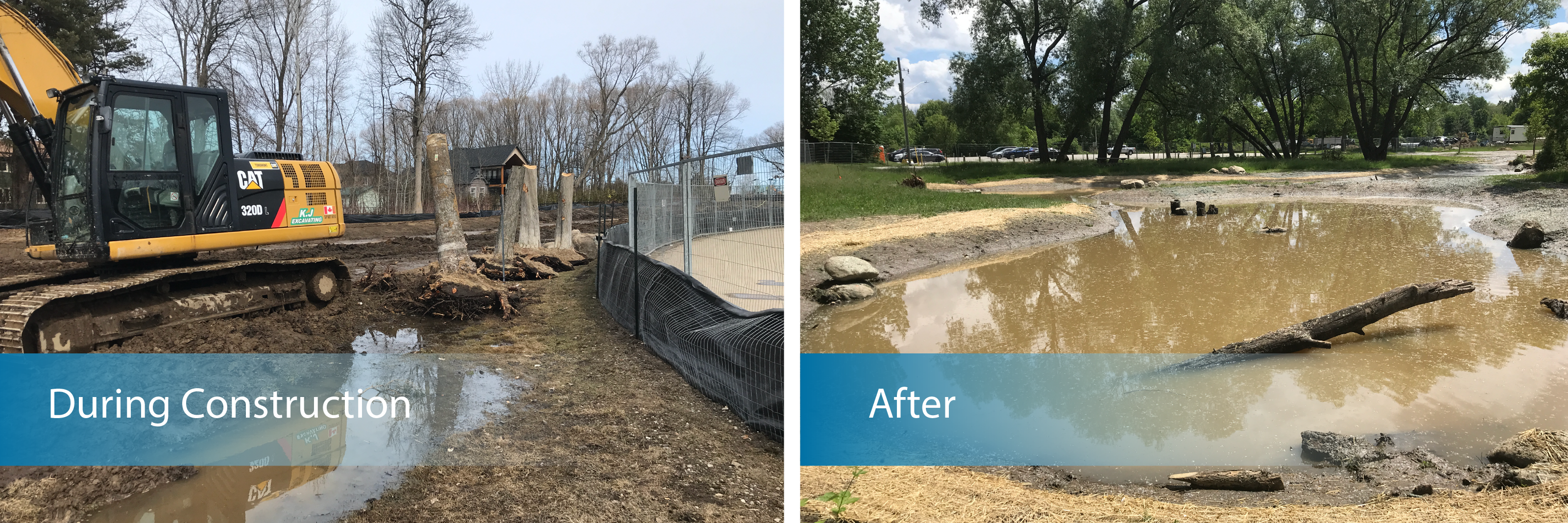
At the beginning of 2022, the Town of Innisfil began the Park Road and Innisfil Beach Park Wetland and Channel Realignment project. The goal of this project was to regrade the existing ditch system along Park Road to redirect 34 hectares of stormwater away from these ditches, into a newly created channel through the North side of Innisfil Beach Park.
This project piqued the interest of the Restoration department and, working with the Town of Innisfil, they were able to help fund many additional natural heritage features. These features included: 5 wetland pockets (0.5 hectares), over 2000 native trees and shrubs, and 0.4 hectares seeded with native wetland and riparian plant species.
By redirecting the stormwater, and enhancing the newly created drainage channel, it now has a much more significant ecological function. This will not only improve the habitat available for all local species but allow for fish passage further upstream.
3. Bradford Low Impact Development Parking Lot Retrofit
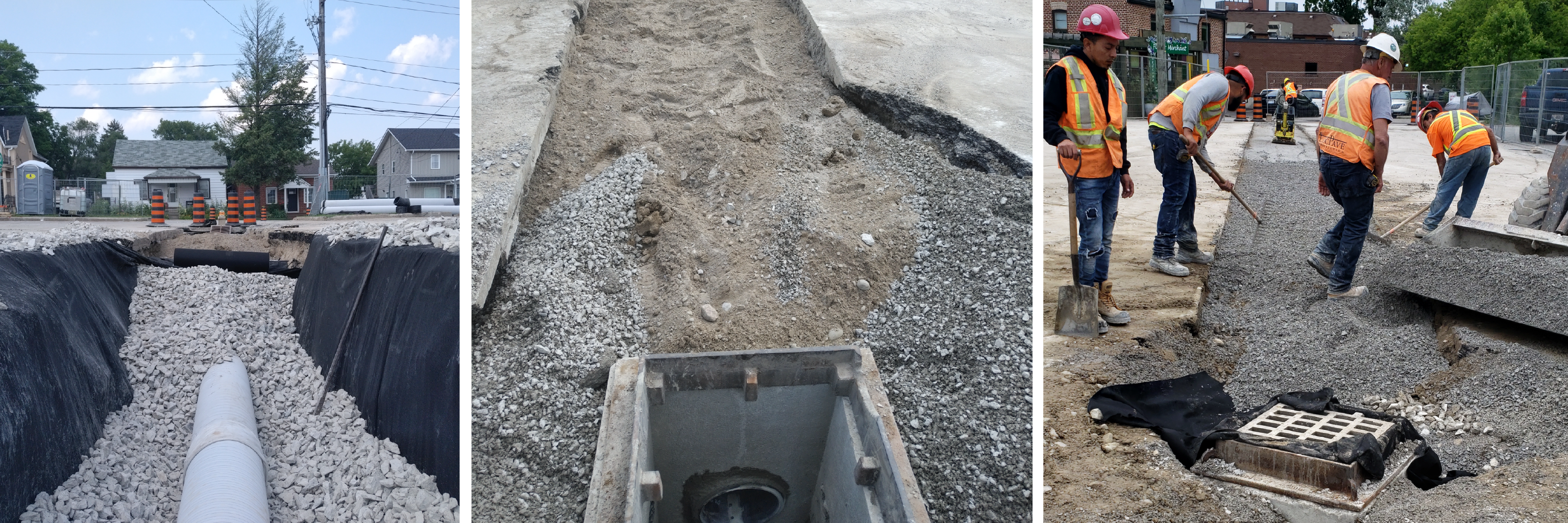
Over the past few years Bradford West Gwillimbury has been working with us to incorporate low impact development practices into their designs such as the Mary Street Parking lot which used a treatment train approach that incorporated permeable pavers and a bioswale.
The John Street parking lot reconstruction project included low impact development initiatives to contain runoff and phosphorous loadings within the project site. This project reconstructed an impervious parking lot along with the construction of an exfiltration trench that is tied into the retrofitted catch basins to capture stormwater runoff from the 1,800 square metre resurfaced parking area.
4. Design Projects
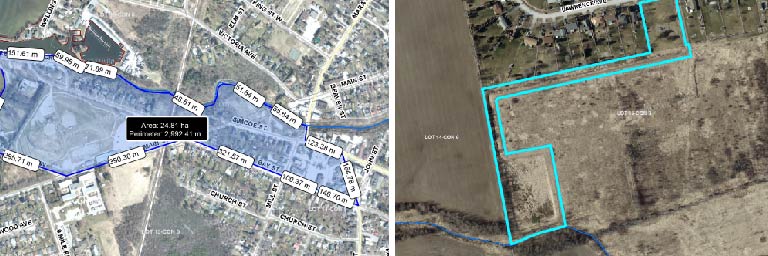
We have continued to work with the Ministry of Environment Conservation and Parks to create multiple project designs throughout the watershed. We work with our member municipalities to find opportunities to help manage the quantity and quality of the stormwater runoff, along with improving the overall natural heritage. In 2022 our restoration team tendered, reviewed, and/or finalized the creation of at least 5 design drawings which we are looking forward to supporting implementation of throughout the next few years. These projects can be divided into two main categories: Natural Heritage and Stormwater Management improvements.
Stormwater Management:
- Danube Seniors Leisure Centre: This project is using Low Impact Development methods to create a design that will improve the stormwater drainage, with the goal of decreasing phosphorus and sediment that is entering the West Holland River, though existing stormwater infrastructure.
- Beaverton Low Impact Development: We are working with the Township of Brock to develop a local stormwater management plan and design within Beaverton, along with stormwater improvements at the Beaverton Fire Hall. The goal is to reduce the stress on the local infrastructure, while improving the overall water quality of precipitation runoff by filtration and infiltration using Low Impact Development methods.
- Victoria Green Pond Upgrade: The Town of Innisfil was looking to maintain an existing dry stormwater pond. After discussions with our staff, they have upgraded the design to provide additional water quality benefits (removal of additional Total Suspended Solids, and/or enhanced phosphorus reduction), in addition to water balance improvements.
Natural Heritage Improvements:
- Hamilton Park Wetland: We have begun the design process with the Town of Aurora on the improvement of wetland habitat within Hamilton Park. The goal of this project is to improve the overall habitat and ecological value of the lands adjacent to Marsh Creek, while addressing the invasive phragmites.
- Oro-Medonte Wetland: A local landowner has been involved with our reforestation program for many years and has decided to further enrich the diversity of their property. Working alongside our staff, they will be developing a design that focuses on expanding a wetland that currently exists beside an agricultural field. The goal for this design is to enhance the biodiversity within the property and help manage the field’s stormwater runoff. Projects like these are important for our Restoration department because they showcase the importance of building partnerships with local landowners and our commitment to enhancing wildlife habitat, while considering the needs of the community.
5. Clean Water Diversion Projects
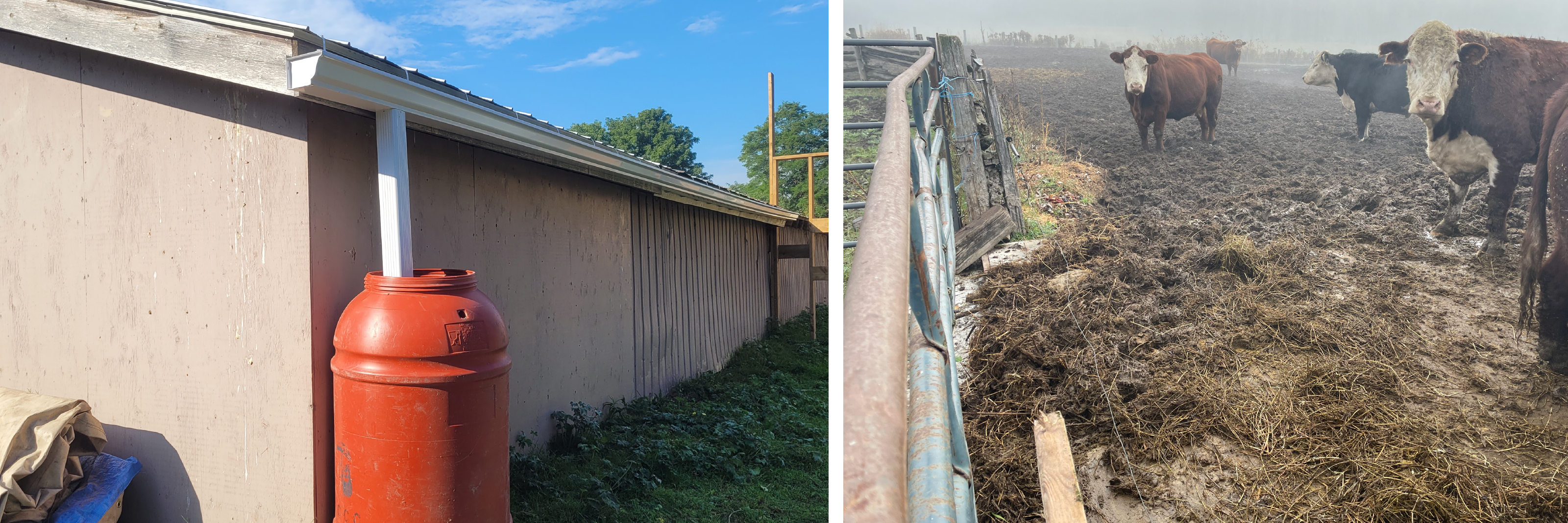
Our restoration funding program assists farmers by supporting projects that divert clean water around farm buildings and manure storage and benefit livestock by improving feedlot conditions. By installing diversion structures that direct water away from barnyards, exercise yards or manure storage areas, dirty water is prevented from running into streams and ditches and keeps livestock from standing in the mud.
The two Clean Water Diversion projects completed in 2022 improved the quality of life for 26 cows, 70 sheep, 7 horses and 2 farmers.
6. Community Action Projects
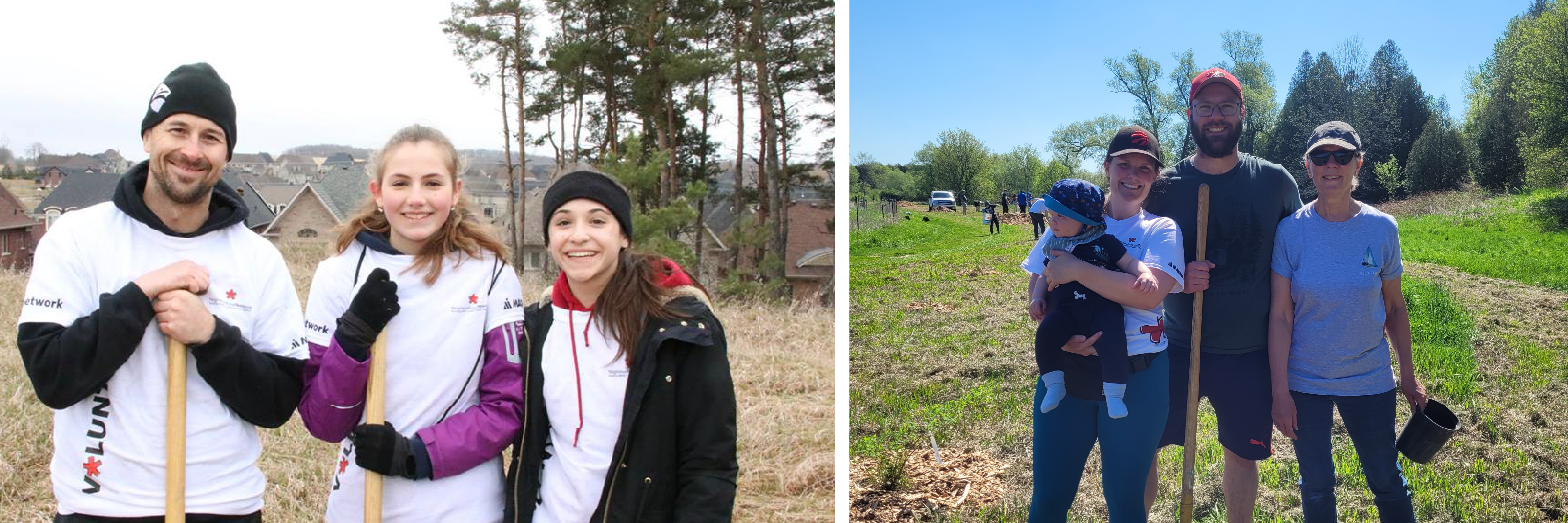
We completed 33 Community Action projects with over 1,100 dedicated volunteers planting over 5,670 native trees, shrubs and herbaceous plants, and worked with 4 schools to plant native trees and shrubs that will help enhance their schoolyards and create outdoor learning spaces. It also provided the opportunity for students to connect with nature and explore the natural environment.
We were excited to honour two community groups at our Annual Conservation Awards that are making a difference in our watershed and present them with a Healthy Community Award in 2022.
- Living Green: A charitable organization that engages in building a well connected and literate green community, Living Green Barrie has delivered community planting events and has inspired volunteers to get involved to reach their goal of planting 10,000 trees by 2024. Since October 2021, Living Green Barrie and its volunteers have helped plant 1,930 native plants, with support from the Conservation Authority
- Neighbourhood Network: In supporting the enhancement and rehabilitation of natural public spaces, Neighbourhood Network has been hosting native tree and shrub planting events since 2010. Every year, the event grows as more municipalities in York Region get involved. This past spring, 230 volunteers planted nearly 1,200 native trees and shrubs at planting events located in Aurora, East Gwillimbury, Georgina, King Township, Newmarket, and Whitchurch-Stouffville! Since 2010, Neighborhood Network has planted more than 22,000 native trees and shrubs with over 1,000 volunteers including high school students, families, community groups and local businesses, restoring nearly 14 hectares in the Lake Simcoe watershed.
- Fieldcrest Elementary School: Students have been learning about their roles and responsibilities as global citizens and how to engage with issues facing humanity and the environment. As part of their learning journey, Anne Wright and her students discovered that the school property was once a farmland before it became a school. Embarking on a mission to restore an overgrown area of the property, Anne and here students created a “no mow” zone, planted native species, created pathways, and made a conservation area for students, staff, and their community to learn from and preserve.
The project was complete over the course of two year and in all, more than 50 students planted 165 shrubs, 65 trees, and 30 wildflowers.
7. Tree Planting
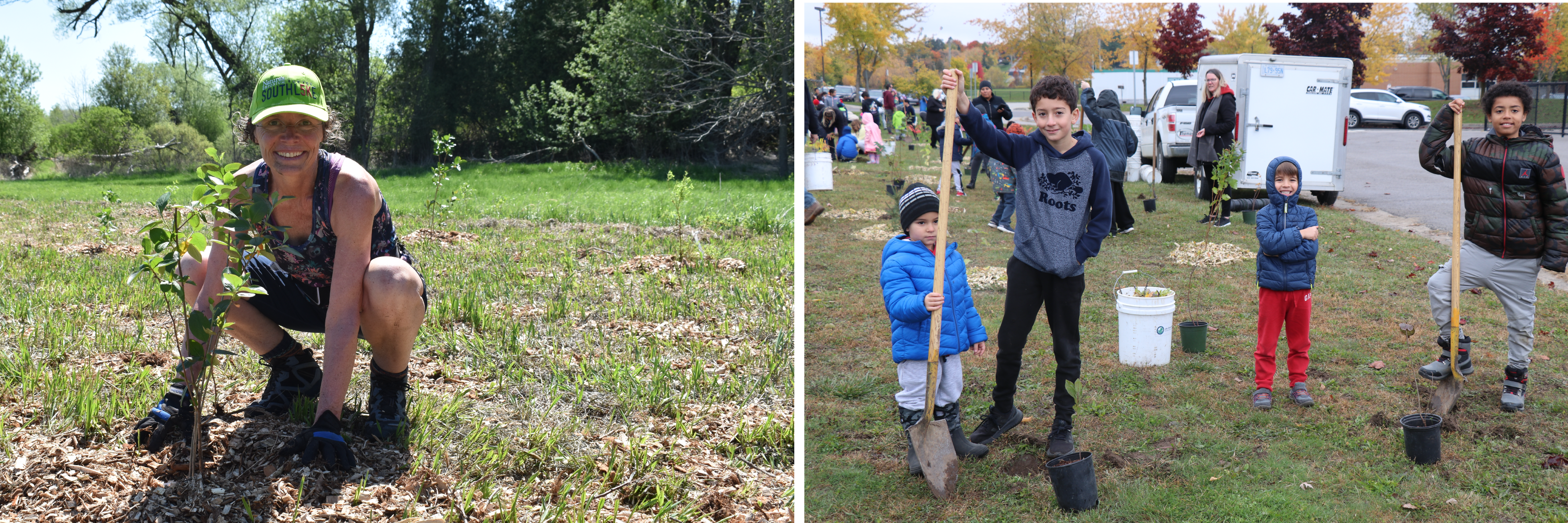
The forestry team completed 24 projects in 2022. This included 40,203 trees and shrubs that were planted on private and public land. These projects restored 17.4 hectares of land, reduce phosphorus by 10.9 kilograms per year, increase biodiversity, sequester carbon and improve our overall natural heritage system.
One private landowner in the Township of Oro Medonte worked with us to plant 2250 trees restoring 1.16 hectares. This project will expand in the spring of 2023 as they are completing another tree planting, connecting significant forest cover in our watershed, the Simcoe County Greenlands. And to top it off we are designing a wetland pocket to be incorporated on the property.
8. Tile Outlet Control Structures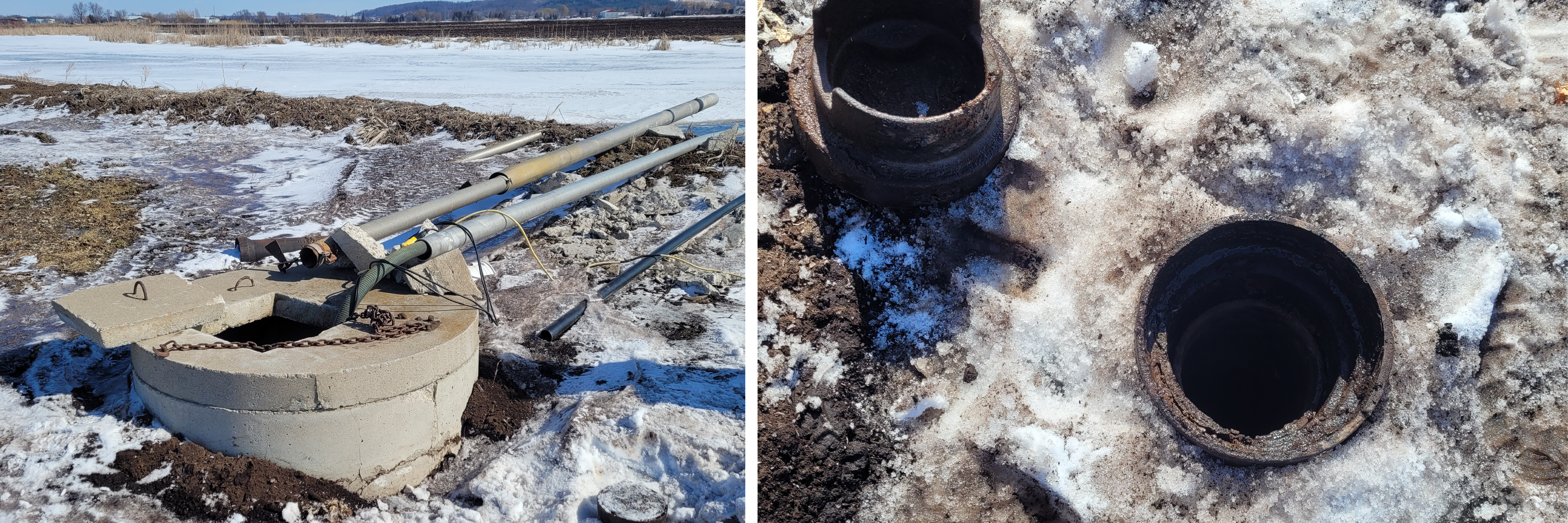
Over the years, we have encouraged farmers to install Tile Outlet Control Structures to help control the amount of water on their fields. The structures are designed to hold back water and let it flow when needed. Depending on soil moisture conditions, the farmer is able to control the water table in each tiled zone so that optimal growing conditions are obtained over larger areas. The control structures can be closed during the winter and early spring to keep moisture and nutrients on the field. During the late spring, summer and fall, the control structures can be opened and set for optimum plant growth requirements and can be closed during rain events, thus reducing the need for irrigation.
In 2022 we installed 2 tile outlet control structures that will control and help manage the water flow over 39 hectares of farm fields.
9. Cover Crops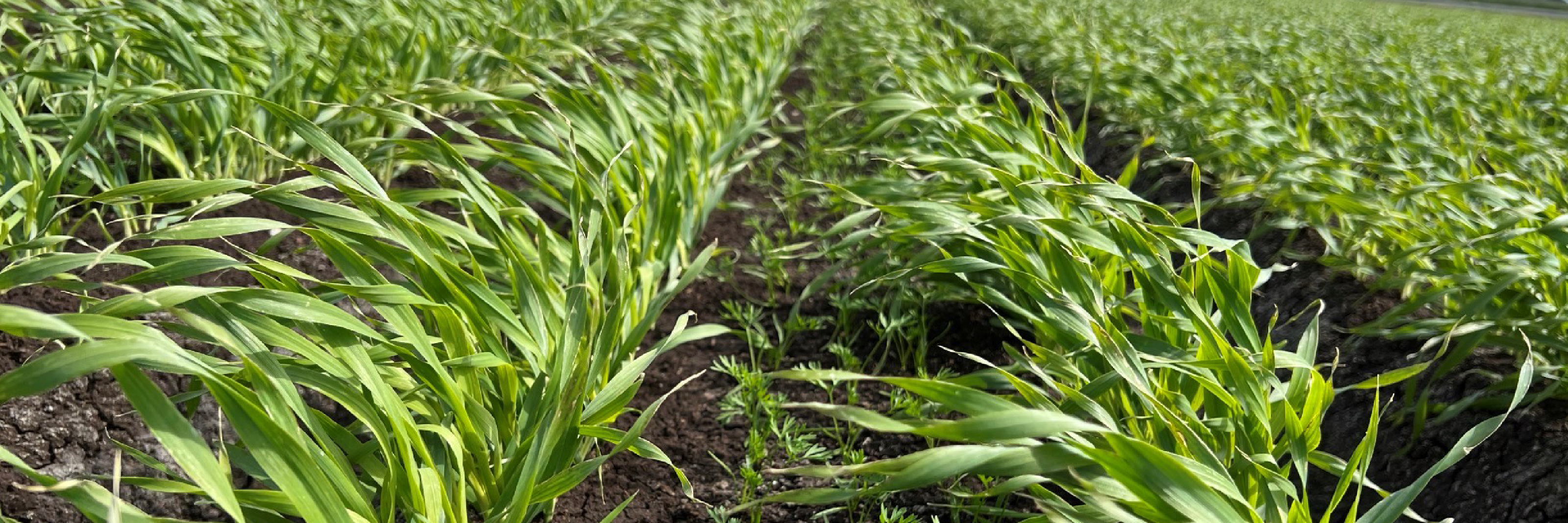
In 2022, we completed 12 cover crop projects to help improve and protect over 380 ha of farmland. Bare soils during the growing season can affect crop and soil health as they are susceptible to wind and water erosion as well as annual weeds. Cover crops can help by improving infiltration of excess surface water, relieving compaction of over-tilled soil and adding organic matter to encourage beneficial soil microbial life.
In the Holland Marsh, the bare fields can be susceptible to soil erosion at planting time. Farmers have been inter-seeding with barley seed to hold the seedbed during the early phase of vegetable seed growth and to reduce soil erosion by wind and water and help to prevent wind damage. Overwinter crops such as oilseed radish, tillage radish, oats and barley are also beneficial with regards to soil, water and wind erosion control and can help improve overall soil health.
10. Removal of Invasive Species 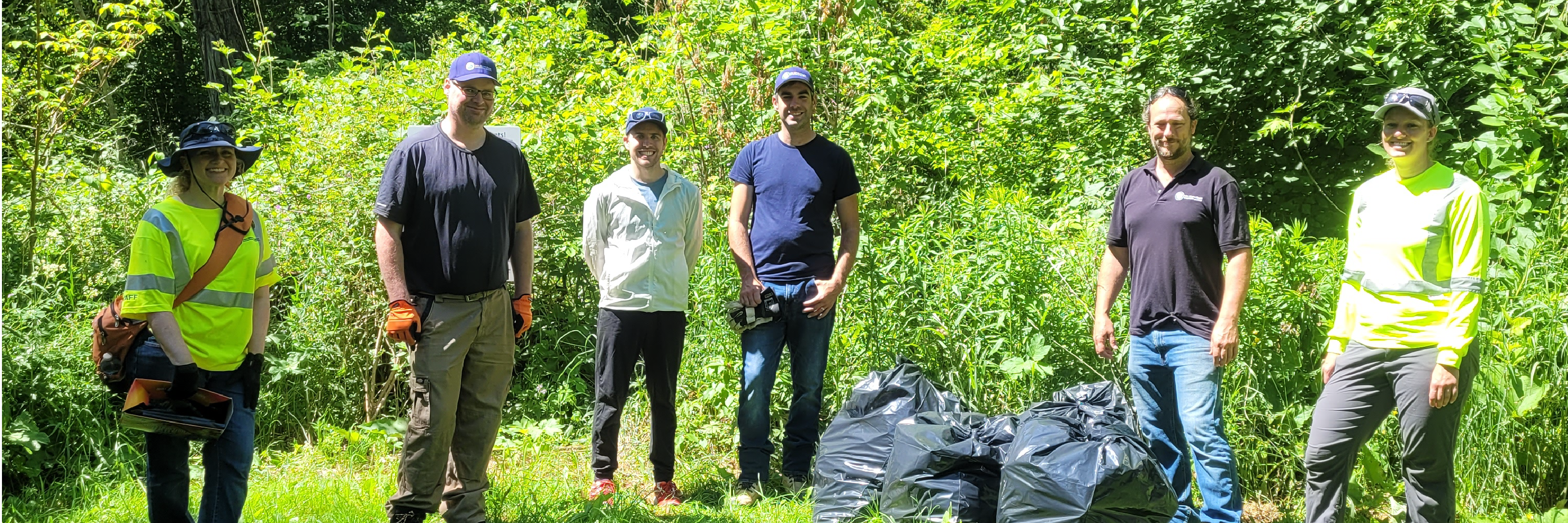
Phragmites is a highly invasive plant that is taking over ecosystems and outcompeting native plants. We have this invasive Phragmites within a few of our conservation areas, and due to its negative impact on species and ecosystems, the Conservation Authority feels it would be beneficial for the overall property to control and ideally eradicate this invasive species.
Scanlon Creek Conservation Area and Pangman Springs Conservation Area both underwent major ecological changes over the past 10 years, and we completed restoration projects at each site. The projects have been very successful but unfortunately, Phragmites is now found at both sites and continues to spread.
In 2022 we hired a contractor who specializes in invasive plant management to help control the Phragmites at these sites. This will assist to control the invasive plants and will make the project sites more manageable moving forward while allowing native vegetation to continue to re-establish in these areas, providing key habitats for native wildlife species.
We also continued to do spot treatment and manual removal of invasive species, including Wild Parsnip at Rogers Reservoir Conservation Area and Garlic Mustard at Thorton Bales Conservation Area. Thornton Bales Conservation Area was hit hard by spongy moths in 2021, and due to almost complete defoliation, the forest floor received full sun in 2021 allowing these invasives to thrive.
Contact Restoration:
Phone: 905-895-1281
Toll Free: 1-800-465-0437
Email:  restoration@LSRCA.on.ca
restoration@LSRCA.on.ca

